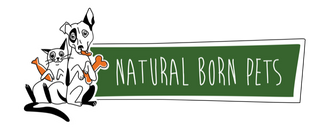With raw feeding, we generally give guidelines on how much to feed based on a percentage of your dog or cat’s ideal weight. Remember though that each animal is an individual with a different metabolism. This article guides you on how to check and when to adjust your portion sizes up or down Is your Dog or Cat the right weight?
A cat or dog’s weight as measured by a number on a scale is not the best way to see if they are the the right weight. It is a useful way to monitor their health and assess puppy or kitten growth, but it is not the best way to know whether or not to adjust their feeding amounts. There are many factors like age, sex, body build, activity level that determine an ideal body weight.
The kilogram number is not an accurate assessment of your dog’s weight. If you have a purebred animal, breed standards for weight can vary widely. Although the weight standard can be a helpful guide, do not rely on it to determine if your own dog is obese.
Monitoring their body condition is a far more effective measure.
Look at your companion from the side. The waist should again be visible – a “tuck” in the abdomen, behind the rib cage area. The waist should be higher than the bottom of the rib cage. If the animal’s waist is the same depth as his chest, he is definitely overweight. It may help to run one hand (palm side up) along the bottom of the rib cage towards the abdomen—if your hand curves up towards your cat or dog’s back, then he has an abdominal tuck. If your hand goes in a straight line, he has no tuck and is likely eating too much (If there are no health conditions that are causing your friend’s extra weight gain)
This side view will vary from breed to breed. For example, greyhounds and similarly built dogs will look thin compared to others as they have rather deep chests and smaller waists. 
With cats, don’t be overly worried about a saggy belly. Many cats have a saggy bit of flesh that hangs down between their back legs. If your cat is otherwise bony, this small pouch of skin is unlikely to be an indication of a weight problem. This skin flap the "primordial pouch" and its purpose is to protect the stomach during fights with other cats. Cats often kick with their back legs when angry, and this flap of skin protects your cat from such attacks.
However, excess fat may be stored in your cat's primordial pouch if he is overweight. If he shows other symptoms of obesity, check his pouch. It should hang loose and be mostly comprised of skin. If the pouch seems to be filling out with fat, this can be an indicator of obesity.

So, in summary...
You shouldn’t be able to see your dogs or cats ribs or their backbone but you should be able to feel them pretty easily .
We have found that most over-weight raw fed pets are simply fed too much. Don’t forget that exercise is important too. Check with your vet for underlying health problems if your animal is under-weight or if their overweight issues do not get sorted by reducing portions.

